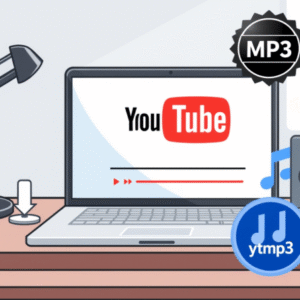For beginners and music enthusiasts alike, Musicca has become a popular go-to platform. It offers a wide range of free music tools, including a highly interactive virtual piano. Whether someone is looking to explore music theory or simply play around with piano keys online, Musicca makes it easy, intuitive, and accessible. Best of all, it’s completely free, requiring no downloads or purchases. With a sleek interface and educational value, it’s perfect for anyone eager to learn music.
Why Musicca Stands Out in Music Education
Musicca isn’t just another free tool—it’s an all-in-one music education resource. Users can explore note reading, rhythm exercises, scales, and even ear training. The platform simplifies complex musical concepts, making it ideal for both self-learners and classroom settings. The integration of the virtual piano helps users visually and aurally connect with the lessons. It creates a learning environment that is both fun and informative, enhancing musical confidence and performance.
Getting Started with the Virtual Piano on Musicca
One of the most appealing features of Musicca is its virtual piano. Accessible directly from a browser, the tool mimics the layout of a real keyboard. Whether a user is practicing scales or testing their musical ear, the virtual piano responds with real-time audio and visual feedback. Beginners especially appreciate how the keys are labeled, which helps them associate sounds with their corresponding notes. It’s an excellent introduction to piano basics without the need for a physical instrument.
An Interactive and User-Friendly Experience
Musicca offers a clean and straightforward user experience. The layout is simple, yet effective, allowing users to focus on learning without distraction. The virtual piano is one of the easiest tools to navigate, and it plays seamlessly on both desktop and mobile browsers. Students can take quizzes, play musical games, and test their skills through interactive features. All this makes Musicca not only a powerful free tool but also an enjoyable one that encourages consistent practice.
Educational Benefits of Using Musicca
Musicca is designed with educational growth in mind. Its features are aligned with music curriculum standards, making it a useful addition to classrooms. Teachers often use Musicca as a supplement to in-person instruction. Through exercises on rhythm, intervals, and scales—enhanced with the virtual piano—students can solidify their understanding in a hands-on way. The visual cues and immediate feedback are especially beneficial for auditory and visual learners. It’s education, made fun and engaging.
Free and Accessible for Everyone
The beauty of Musicca lies in its accessibility. It doesn’t require users to create an account or download any software. Whether someone is using a PC, Mac, or smartphone, Musicca runs smoothly in a browser. The fact that it’s a free music tool means anyone, regardless of background or location, can start learning today. This democratization of music education opens doors for many who otherwise wouldn’t have access to formal music training or instruments.
Perfect for Self-Learners and Hobbyists
Not everyone has time or money for traditional music lessons. That’s where Musicca shines—it offers a wealth of content for self-paced learning. The virtual piano is ideal for hobbyists wanting to explore melodies or learn basic finger placement. With guided activities and fun practice challenges, users feel like they’re making real progress. Whether someone is 12 or 72, Musicca provides a supportive space for musical exploration at any age.
Using Musicca in the Classroom
Many music teachers are turning to Musicca to support their lessons. Its tools are easy to demonstrate and great for group participation. The virtual piano allows for on-screen collaboration during lessons, helping students follow along even without their own instruments. Plus, the theory exercises give teachers a way to assign homework that’s both educational and enjoyable. As a free musicca tool, it bridges the gap between traditional and digital music education.
Improving Musical Ear and Memory
One often overlooked benefit of using Musicca is how it helps develop the musical ear. Exercises involving note recognition and intervals sharpen listening skills. The virtual piano allows students to experiment with tones and recognize differences in pitch. This auditory training plays a big role in developing musical intuition, helping students play by ear and understand songs more quickly. Repetition and engagement make Musicca a powerful tool for internalizing musical patterns.
Fun for Kids and Adults Alike
Musicca’s appeal isn’t limited to a specific age group. Kids enjoy the games and visual activities, while adults appreciate the structured learning modules. The virtual piano becomes a shared family tool, letting siblings or parents and children learn together. The free nature of the platform removes barriers, making music education a possibility for all. It’s rare to find such an inclusive and feature-rich tool that works well across ages and devices.
How the Virtual Piano Enhances Learning
What makes the virtual piano a standout feature is its flexibility. Learners can use it to visualize chords, test hand placement, or just have fun creating melodies. It’s more than a toy—it’s a learning companion. Users can play scales, try out rhythm patterns, and even replicate simple songs. With each interaction, their understanding deepens. In combination with Musicca’s theory tools, the virtual piano provides a hands-on way to grasp abstract concepts.
Final Thoughts: Is Musicca Worth It?
In a word—yes. Musicca combines high-quality educational content with ease of use, all without charging a dime. Its virtual piano and other tools create a well-rounded platform that empowers users to grow musically. Whether used as a supplement for school, a resource for home practice, or simply for fun, Musicca delivers real value. It proves that music education doesn’t have to be expensive or complicated—it can start with just a click and a little curiosity.









